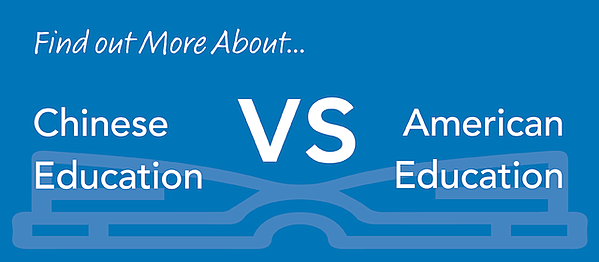
While most Chinese parents are familiar with the standards found in a traditional Chinese school, the culture found in an American classroom can seem wildly different. Understanding this difference is key when it comes to deciding which international school is most beneficial for your children.
To help you better understand what you can expect from an American classroom setting, we’ve outlined three key differences that may be unfamiliar to someone more familiar with a Chinese school.
1. Less Conventional Classroom Culture
American classroom culture thrives on boisterous conversations, group discussions, and student engagement with their teacher. This results in a less conventional and more collaborative classroom setting than Chinese parents may be accustomed to.
While the foundation of respect towards the classroom authority is still present, teachers make themselves available to students outside of the classroom by utilizing office hours. This gives teachers the chance to get to know their students on a more personal level, and by better understanding each student and their individual needs, teachers in American classrooms are better equipped to appropriately help them.
“Not only is there the traditional respect, but also the willingness to laugh and work together outside of the classroom. Students are respectful of teachers’ time, but they are encouraged to ask questions and seek help before and after class and by email,” said Joel Klammer, High School teacher at Concordia Shanghai.
2. Greater Celebration of Student Achievement
Though students in an American classroom are more engaged with each other and their teacher, each student is focused on their own academic goals, rather than the goals and success of the entire classroom. In turn, teachers treat each student as individuals rather than as one group entity.
This focus on self-achievement lends to a classroom culture where students are able to articulate their questions or concerns and with less external pressure coming from the teacher to reach goals, students learn how to be proactive in terms of their academic goals.
Most Chinese parents are unfamiliar with the American classroom environment. To learn exactly what the difference between the American and Chinese classrooms are, click here.
3. Collaborative Classroom Environment
In an American classroom, students are encouraged to participate in discussions by asking questions; in fact, students are often awarded for their participation. In this classroom culture, seeking clarification on subject matter is not seen as a sign of weakness, but rather it shows the student is engaged with their coursework and wants to learn more.
Questions posed by students often lead to vibrant discussions that help everyone understand the subject matter to a higher degree, and by sharing information, opinions, and concerns, teachers find all students benefit.
At Concordia Shanghai, our student-centered classrooms are an exciting place for both learners and teachers, with Klammer describing his as both dynamic and exuberant.
“This is not an exaggeration. Not only is there the traditional teacher to student instruction, but there are always clarifying questions from the students and the ‘what if’ questions that drive the discussion in the classroom to a much deeper level.”
The classroom environment is just one of the many factors that play a role in deciding between a Chinese and American education for your children. It’s important to understand the similarities and differences between these two curriculums, to take into consideration both the type of environment where your children will thrive and the type of environment that will help your children get into their best-fit college or university.
Click the link below to take a look at a Chinese education system vs an American education.





